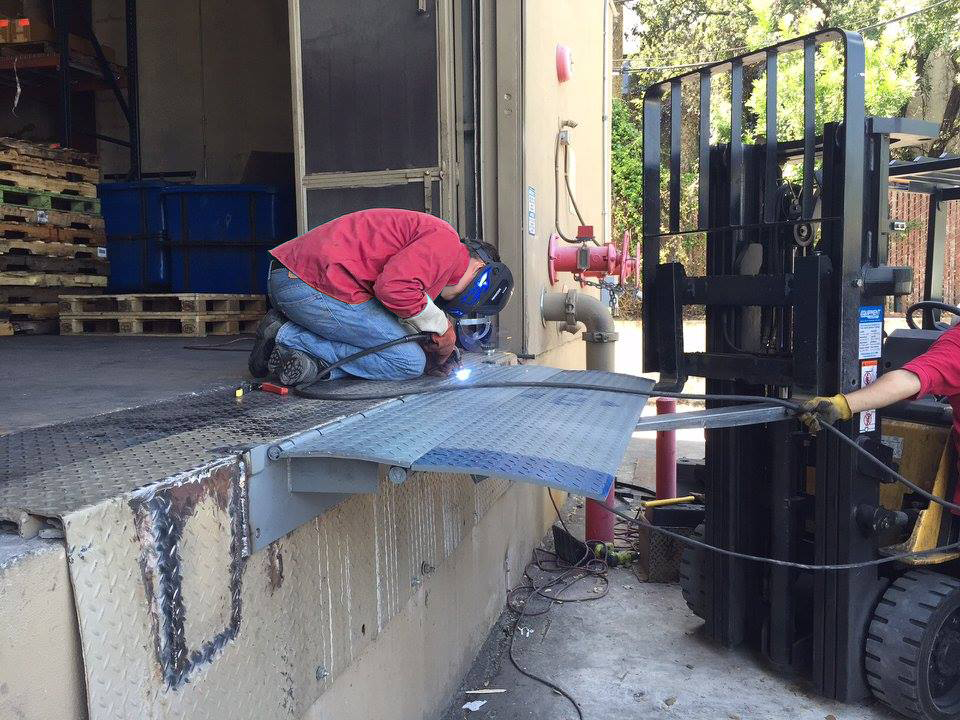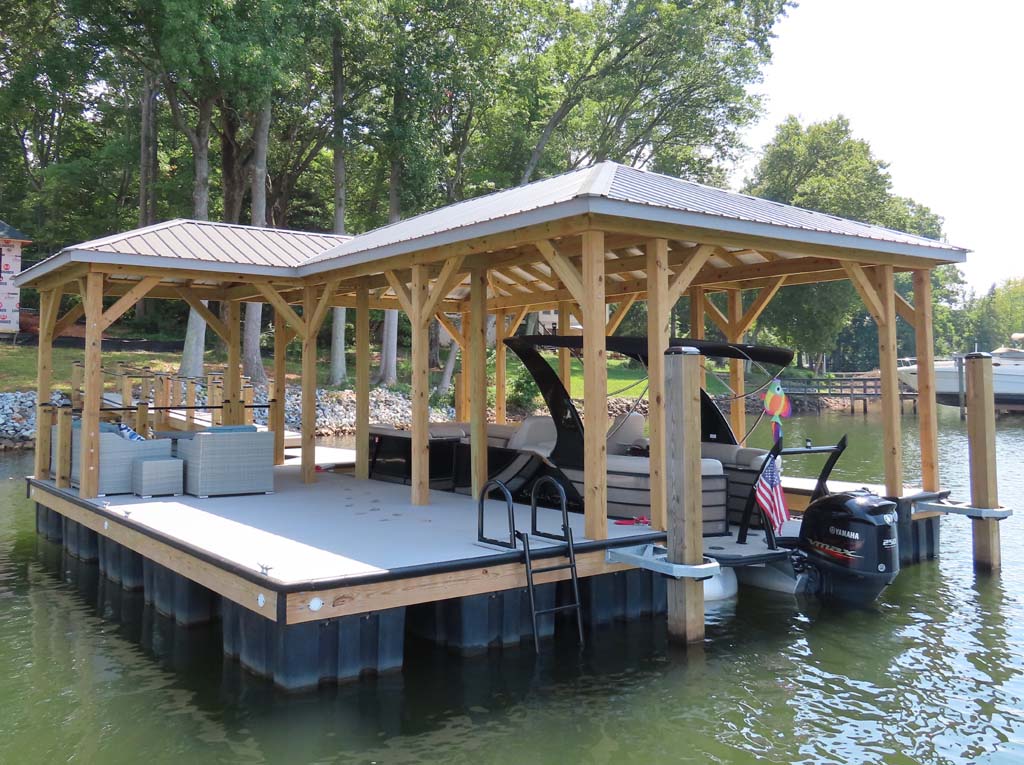Reliable Dock Repair Service Techniques: Making Certain Structural Stability
Making certain the structural stability of docks with effective repair work strategies is extremely important for the durability and safety of marine facilities. Subsequently, choosing the appropriate fixing materials, such as corrosion-resistant alloys and composite products, is essential for resilience.
Analyzing Dock Damages
Evaluating dock damage is an essential very first step in guaranteeing the structural stability and safety of any type of docking facility. Secret facets to take a look at include the dock's foundation, pilings, decking, and hardware (Dock Repairs).
Structural designers or certified examiners normally execute these assessments using specialized strategies and devices. For example, undersea evaluations might employ sonar tools or remotely ran automobiles (ROVs) to identify immersed damage. Above water, aesthetic examinations are matched by using moisture meters and various other diagnostic devices to uncover underlying concerns not instantly noticeable to the naked eye.

Choosing Repair Work Materials
Choosing the suitable repair service products is a pivotal action in the dock reconstruction procedure, one that directly influences the longevity and performance of the fixed structure. Material choice need to be driven by elements such as environmental conditions, load-bearing demands, and compatibility with existing dock components. For example, wood is a conventional selection for docks as a result of its natural strength and visual allure. Picking the ideal type of timber, such as pressure-treated lumber or normally rot-resistant species like cedar or teak wood, is critical to endure water atmospheres.
Along with wood, composite products are significantly prominent because of their toughness and reduced maintenance needs. Compounds, usually made from a mix of plastic and timber fibers, use outstanding resistance to rot, pests, and UV damage. For steel anchors, choosing corrosion-resistant alloys such as galvanized steel or marine-grade aluminum is important to stop rust and make certain architectural honesty in saline water conditions.
Epoxy materials and marine-grade sealants are vital for fixing fractures and securing joints, offering a water resistant obstacle and boosting the dock's general stamina. By thoroughly picking top quality products, dock fixings can achieve durable outcomes, thus protecting versus future degradation and making certain risk-free, reputable usage.
Structural Reinforcement Techniques
Effective architectural support strategies are essential in making certain the security and durability of dock fixings. One fundamental method entails the usage of steel or composite reinforcement bars (rebar) within concrete frameworks. Rebar supplies extra tensile strength, protecting against fractures and distributing loads much more evenly. This method is particularly reliable for docks exposed to heavy tons or severe ecological conditions.
One more necessary technique is the application of fiber-reinforced polymers (FRP) These materials provide high strength-to-weight proportions and outstanding resistance to rust, making them perfect for enhancing concrete or wooden docks. FRP can be applied in sheets or strips and bound with epoxy materials to enhance structural stability.
Supporting and anchoring systems additionally play an important role in structural support. Cross-bracing, using steel or wood beams, can combat side forces, minimizing swaying and motion. Anchoring systems, such as helical piers or driven stacks, supply a secure structure by moving lots to deeper, extra steady dirt layers.
Last but not least, the combination of load-distribution plates can aid distribute weight much more uniformly across the dock's surface, alleviating localized anxiety read what he said factors. These strategies collectively guarantee that anchors stay secure and robust, with the ability of holding up against the rigors of their functional atmosphere.
Advanced Fixing Methods

Another innovative method includes underwater welding, which permits repairs to be conducted without the demand to dewater the location. This technique is particularly useful for dealing with architectural issues in submerged dock elements, making sure minimal disturbance to operations. Boosted welding methods, paired with robot systems, supply accuracy and integrity, consequently prolonging the life expectancy of the dock.
Furthermore, cathodic protection systems are applied to avoid rust in metallic dock structures. By utilizing sacrificial anodes or satisfied existing systems, these methods effectively reduce the electrochemical procedures that bring about material degeneration.
Lastly, progressed tracking technologies, such as architectural health and wellness tracking (SHM) systems, supply real-time data on the condition of dock frameworks. These systems enable aggressive maintenance and prompt interventions, inevitably ensuring the lasting architectural stability of the dock.
Upkeep and Avoidance
Upkeep and prevention are essential principles that underpin the longevity and safety of dock frameworks. Regular evaluations are paramount, permitting early discovery of damage, prospective weak points, and ecological impacts. An aggressive technique, entailing routine look for rust, rot, and structural changes, mitigates pricey repair work and extends the dock's operational life.
Safety nets must include applying protective layers to steel components to protect against rust and making use of cured wood to resist decay. Furthermore, ensuring proper drain and air flow can prevent water accumulation, which is a common reason for structural destruction. Including quality products and adhering to supplier standards throughout building and construction and repair service stages also play crucial roles in enhancing resilience.

Training workers in dock maintenance finest techniques ensures consistent application of safety nets. Leveraging technical advancements, such as drones for inspections and sensing units for dig this real-time tracking, can even more enhance upkeep efforts. By focusing on upkeep and avoidance, dock proprietors can ensure architectural stability, operational safety, and cost-effective monitoring over the dock's click here to find out more life expectancy.
Conclusion
In verdict, preserving the architectural integrity of marine centers demands thorough dock repair work strategies. Extensive examinations making use of advanced devices discover both noticeable and hid damages, while the option of appropriate fixing materials enhances longevity. Implementing architectural reinforcement techniques addresses anxiety factors efficiently. Advanced fixing strategies, combined with regular maintenance practices, make sure the dock remains functional and secure under varied environmental problems. Embracing these approaches significantly lengthens the life expectancy and functionality of aquatic framework.
Making sure the architectural stability of anchors through effective repair work techniques is paramount for the longevity and safety of aquatic facilities.Choosing the suitable repair work materials is a pivotal step in the dock restoration process, one that directly influences the longevity and performance of the repaired structure.Efficient architectural support strategies are vital in ensuring the stability and durability of dock repair services. By focusing on upkeep and prevention, dock proprietors can make certain architectural stability, operational security, and economical monitoring over the dock's lifespan.
In final thought, maintaining the structural integrity of marine facilities demands extensive dock repair service techniques.